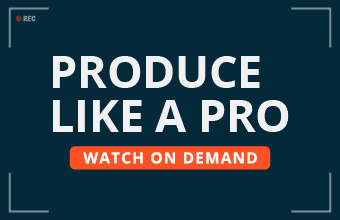Are you marketing your business on Twitter? How about Facebook, Pinterest, Instagram, G+ and LinkedIn? If, like many marketers, you’re struggling to keep up with the ever-increasing repertoire of social media platforms, you’re certainly not alone.
Is it really important to be marketing on all of them? Or can too much diversity kill off your marketing efforts altogether?
You know what they say about having too much of a good thing…
The truth is there is such a thing as marketing on too many social media platforms. If you were to advertise on every platform from StumbleUpon and G+ to YouTube and Instagram, you would dilute the effectiveness of your overall campaign. Whilst you are struggling to keep up with all of the different pages you need to manage, you are losing contact with the more vital aspects of marketing on these platforms, such as engaging with customers. Therefore, while you may have a presence on a huge number of social media platforms, it’s unlikely that your presence will be very effective. But, how many is too many?
Are you overdoing it on the social media front?
There are some telltale signs that you are overdoing it on the social front. Ask yourself the following questions…
- Are you putting in an adequate amount of time on every social media platform? If not, you’ve got too many for your capabilities.
- Do all of your accounts have a large following? If not, you’re using too many channels.
- Do you feel like you are completely on top of every social media account and able to respond effectively to inquiries? If not, you’ve bitten off more than you can chew.
- Do you feel as if your business has to be present on every new platform that comes out? If so, you’re in the wrong mind-set.
Too many social media platforms can hurt your branding and your consumer loyalty, and this is when you know you have gone too far. Yet, you certainly shouldn’t put all of your efforts into one platform alone. The power of social media is astronomical. A study conducted by Market Force indicates that social media posts influence almost 80 percent of consumers when it comes to purchasing decisions. Therefore, you do need to embrace several platforms. A lot of companies simply decide between Facebook and Twitter and then focus all of their efforts on the chosen site. This is ill advised. You need to choose your platforms carefully. All social media platforms have different unique connection points and audiences and it is all about working out what’s going to be right for your business.
So, which platforms should you be using?
There are lots of factors you need to take into account when determining where your brand needs to be active. Firstly, you need to identify the type of people you want to reach via social marketing. This can be anything from their age, to their sex, to their income – it’s essentially your target consumer base. You then need to take a look at the social media platforms that are going to help you reach this target consumer base.
Take LinkedIn as a prime example. This platform is great for brand exposure and SEO particularly, as well as companies that wish to reach people through copywriting. However, if your target consumer base is below the age of 24, it’s not the ideal platform.
Pinterest is another brilliant example. The demographics for this site are extremely interesting. It’s highly female-dominated (84 per cent of users are female), with most users having college education and boasting an income of 50,000+/year. It is an extremely powerful medium, yet only if your company falls in line with what it has to offer. It is image-dominated and female-dominated, and if this doesn’t apply to your company, it’s highly unlikely you need a presence on Pinterest. This is the place to be for jewellers, homeware stores, photographers, fashion companies and such like.
Where are your competitors?
You should also take a look at where your competitors are active. This means where they are having real activity on social media platforms, don’t take abandoned accounts into consideration. Think about the type of content you are going to be sharing as well. As mentioned, Pinterest is ideal for photographs, as is Instagram. YouTube is of course the obvious choice for video marketing. Twitter is ideal for companies that want to provide short nuggets of information and interact frequently.
In fact, the only platform that can be considered an all-arounder is Facebook. Not only does it allow you to post articles, text, video and photographs, but it is effective in regards to all objectives, i.e. brand exposure, customer engagement, traffic to site and SEO. Contrast this with Instagram, which is really all about photographs and brand exposure, and you see the difference. Therefore, you also need to carefully consider what your main objectives are when choosing your platforms.
Because of this, Facebook is probably the only social media platform whereby all types of businesses should really have a presence, no matter what field you’re in. The other five main social media platforms are Twitter, Instagram, G+, LinkedIn and Pinterest. We’ve already discussed the latter, so what about the other four? A lot of people are shocked to discover that Twitter is only the fourth most popular platform in terms of usage, but what makes it so dominant is that those who actually do use Twitter use it a lot more frequently. To be successful on Twitter you have to post frequently and about anything relevant to your business. It’s all about what’s happening in-the-moment, making it great for SaaS companies, sports businesses, marketing firms and news organisations.
G+ is the place to be for engineering and technology companies. Marketing personnel will also find this platform beneficial. When it comes to Instagram the demographics are again important, with the main age range being 18 to 29 years old. This platform is for image-friendly companies, such as fashion stores, restaurants and architecture firms. Finally, LinkedIn is great for professional businesses, but it really soars in regards individuals, such as journalists, freelance marketers, designers, bloggers and such like. This is a platform that is about quality in terms of content rather than quantity.
No matter what platform you use, it is important that you put together an expert social media strategy, which involves a consistent posting schedule and is catered to the network you are operating. You also need to ensure that your social media presence falls in line with how your website has been built. A consistent brand image and message is a necessity.
Hopefully you now have a better understanding of gauging the number of social media platforms you should be using for your company. Remember, it is better to have fewer platforms that are managed correctly, then tons of platforms that are ineffective. Carefully assess your objectives, consumer base and the type of media you are going to be posting, and match it to the most suitable platforms for you.








